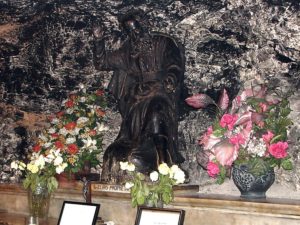One wonders why John the Baptist’s clothing would interest Matthew so that he takes time to describe it. “Now John wore a garment of camel’s hair, and a leather girdle around his waist, and his food was locusts and wild honey” (3:4).
Returning to the historical narrative of 2 Kings, Ahaziah, king of Samaria, fell ill and asked his messengers to ask a pagan prophet (Baal) if he would recover. The angel of God told Elijah to meet these messengers along the way. Elijah sent a message to the king that he would die. Upon the messenger’s return, the king asked them, “What kind of man was he who came to meet you and told you these things? They answered him, ‘He wore a garment of haircloth, with a girdle of leather about his loins.’ And he said, ‘It is Elijah the Tishbite'” (2 Re 1: 7-8).
Malachi, the last prophet of the Old Testament (5th century BC), had said, “Behold, I will send you Elijah the prophet before the great and terrible day of the LORD comes.” (4:5) So, John’s dressing as Elijah signifies to all of Israel that Malachi’s long-awaited messianic time had arrived. Luke tells us of the Baptist, “He will go before him in the spirit and power of Elijah, to turn the hearts of the fathers to the children, and the disobedient to the wisdom of the just, to make ready for the Lord a people prepared” (1:17).
Matthew is linking the Baptist to the prophet Elijah by writing about John’s garment because Elijah wore the same clothing. Matthew wants to tell us that we should see Elijah in John the Baptist by describing the Baptist’s garment. Matthew records this confirmation from Jesus’ own words. “Truly, I say to you, among those born of women there has risen no one greater than John the Baptist (…) For all the prophets and the law prophesied until John; and if you are willing to accept it, he is Elijah who is to come” (11:11-14).
By Maryann Cenzon

Statue of Elijah in the crypt of the Stella Maris Monastery, Mount Carmel, Haifa, Israel, photo by Joe Freeman
